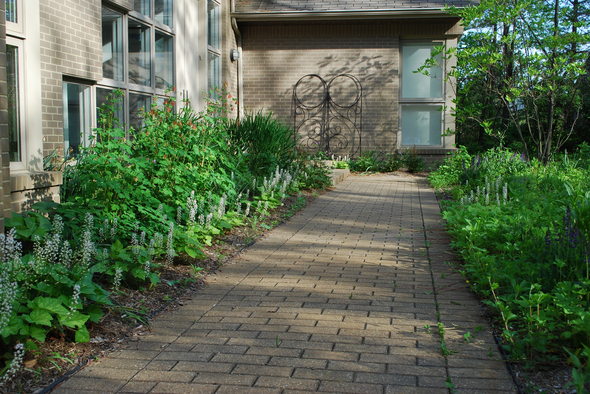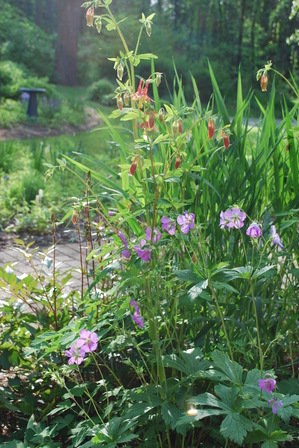Ann Arbor Native - Natives in landscaping don't have to be messy

Foamflower (Tiarella cordifolia) forms a beautiful, formal, native border to a local home.
Rick Meader|Contributor
As this is a regular column in the Home and Garden section, it seems that we should talk a little about design with Michigan native plants here and there.
Spring appeared around here last week for just a few days, to remind us that our yards and gardens are not just holding places for snow. There is life-giving dirt down there, and you may be thinking about revising your yard concept or enhancing it a bit when weather finally releases its icy grip for the coming growing season.
If you are, think about using some of the native plants you’ve learned about in the last year to increase your yard’s diversity and perhaps attract some new bees, birds and butterflies (the three Bs) to it along the way.
First off, let’s talk about the trepidation some people have with native plants, and the mistaken idea that if you’re “going native” that you can’t have a “neat” yard. You can.
There are many native plants that don’t get gangly, or spread like crazy, or flop over, and that appear, well, civilized. For example, wild ginger (Asarum canadense) makes for a great, low, slowly spreading ground cover that has a great, deep green, large, soft leaf that does especially well in shady spots and can be kept in its place without too much work.
Foamflower (Tiarella cordifolium) and Wild geranium (Geranium maculatum) both form clumps that can be put in a definite pattern, and both have interesting foliage that lasts all year. You can see Foamflower in the first photograph with this entry, and Wild geranium in the second photo. I included foam flower as a formal edge to a client’s front entry, and it has done very well as a showy border.

Wild geranium (Geranium maculatum) is another Michigan native that can perform very nicely in a neat, formal setting.
Rick Meader|Contributor
If you’re going for a more natural habitat look, you probably are going to have a somewhat random look, versus defined patterns, but, if you take some nature walks are really look at the plants, you’ll see that the plants aren’t arranged completely randomly.
In fact, many wild, natural habitats often have relatively defined patterns of plants. They may have originally started in a random (i.e. wind-blown or animal-distributed) pattern, but certain species may now be concentrated in certain areas more than others.
This may be due to favorable soil or water conditions in a spot, or a microclimate caused by a rise or depression different from the surrounding area, or perhaps a difference in light in one area from another. The concentration may also be the result of a clone, or of seeds being dropped in a small area around the parent plant.
Whatever the cause, you can use that as a justification for clustering plants in your yard to create a stronger “wow” effect, even when you want a “mostly natural” look. Go ahead and plant 10-30 plants of a species in an area. Just make sure they are species native to Michigan. Do remember, however, that ultimately, soil, water and light will have a strong effect on the long-term look of your plantings, so learn these factors in your yard and plant the plants correctly.
In our next entry we’ll talk about some possible ways you can naturalize your yard, going from a fairly conservative approach to a much more complete transition from lawn to nature. Have a good week (or two) and get out and enjoy nature, everyone!
Rick Meader is a local registered landscape architect who enjoys all things natural, including native plants and the critters who eat them. You can contact Rick at yourland1824@gmail.com.

